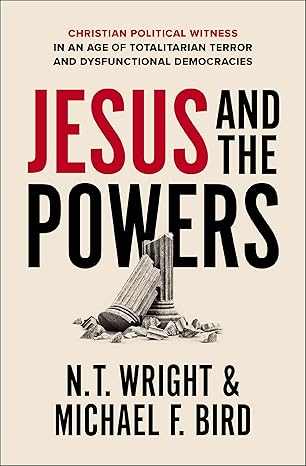
Who Is Jesus? (Crucial Questions)
No person in history has provoked more difference of opinion than Jesus of Nazareth. Some say He was a cunning fraud, while others say He must have been out of His mind. In many cases, His story is altered to suit people’s agendas.
While there are many ideas about Jesus, to truly understand Him, we must go to the Bible. In this booklet, Dr. R.C. Sproul presents a compelling portrait of Christ as the Son of God as he examines the biblical account.
The Crucial Questions booklet series by Dr. R.C. Sproul offers succinct answers to important questions often asked by Christians and thoughtful inquirers.
BEST DEALS
About the Author
Dr. R.C. Sproul (1939–2017) was founder of Ligonier Ministries, an international Christian discipleship organization located near Orlando, Fla. He was also first minister of preaching and teaching at Saint Andrew’s Chapel in Sanford, Fla., first president of Reformation Bible College, and executive editor of Tabletalk magazine. His radio program, Renewing Your Mind, is still broadcast daily on hundreds of radio stations around the world and can also be heard online. Dr. Sproul contributed dozens of articles to national evangelical publications, spoke at conferences, churches, colleges, and seminaries around the world, and wrote more than one hundred books, including The Holiness of God, Chosen by God, and Everyone’s a Theologian. He also served as general editor of the Reformation Study Bible.
Read Sample
Chapter 1 : The Christ of the Bible
There are vast numbers of portraits of Jesus in the art galleries of this world. These images are often conflicting and offer different impressions of what Christ might have looked like during His incarnation. There were no cameras back then, of course, and we have no images of Him from His time, so any idea about Jesus' physical form is pure conjecture.
This multiplicity of images of Christ in art galleries parallels the widespread confusion about Jesus' identity that exists in the world today. The many theories about Christ's identity in circulation are attempts to answer a question that Jesus Himself once asked His disciples: "Who do you say that I am?" This question is so important that one's eternal fate hinges upon the answer one gives.
Unfortunately, most ideas about Christ's identity today are born of empty speculation or created to squeeze into a philosopher's pattern rather than drawn from Scripture. The "Christs" that are born this way simply won't do. A recycled Christ, a Christ of compromise, or an imaginary Christ can redeem no one. A Christ who is watered down, stripped of power, debased of glory, reduced to a symbol, or made impotent by scholarly surgery is not Christ but antichrist--because to supplant the real Jesus with a substitute is to work against Christ. To change or distort the real Christ is to oppose Him with a false Christ. To be redeemed, and to have assurance of our salvation, we must rid ourselves of these imitations. We need Christ-the real Christ.
The Depth of Christ
It is significant that our faith is called "Christianity," for our attention is rightly focused on the One who has redeemed us. And the place we must go to learn about Christ is His holy Word, for it alone speaks utterly truthfully about our Savior. But, because the portrait of Jesus in Scripture is so deep, because it defies human ability to grasp it exhaustively, any study of the person of Christ can only scratch the surface. Consider the Apostle John's portrait of Christ in the book of Revelation. John sets the stage for Christ's appearance by presenting a conundrum:
Then I saw in the right hand of him who was seated on the throne a scroll written within and on the back, sealed with seven seals. And I saw a mighty angel proclaiming with a loud voice, "Who is worthy to open the scroll and break its seals?" And no one in heaven or on earth or under the earth was able to open the scroll or to look into it. (Rev. 5:1-3)
In John's vision of heaven, he is filled with anticipation as he waits to see who will step up, who will be declared worthy to open the scroll. He continues:
I began to weep loudly because no one was found worthy to open the scroll or to look into it. And one of the elders said to me, "Weep no more; behold, the Lion of the tribe of Judah, the Root of David, has conquered, so that he can open the scroll and its seven seals."
WHO IS JESUS? (CRUCIAL QUESTIONS)
And between the throne and the four living creatures and among the elders I saw a Lamb standing, as though it had been slain, with seven horns and with seven eyes, which are the seven spirits of God sent out into all the earth. And he went and took the scroll from the right hand of him who was seated on the throne. (vv. 4-7)
Then the four living creatures and the twenty-four elders prostrate themselves before the Lamb and worship Him, and John hears the praise of the angels:
Worthy is the Lamb who was slain, to receive power and wealth and wisdom and might and honor and glory and blessing! (v. 12)
We can see how John's mood changes through this sequence of events: he was excited that someone was going to come and open the scroll, but then he was plunged into depression because no one was found worthy. When the angel told John not to weep because one had been found worthy-the Lion of Judah-he expected a powerful beast to come roaring in to rip open the scroll, but instead he saw a slain Lamb. This imagery is a vivid example of the profound contrast between Christ's humiliation and His exaltation, between His sufferings and His triumphs. It also gives a hint of the complexity of His character and worth.
Jesus in the Gospels
If we are to look to Scripture to tell us about who Christ is, we are immediately confronted with a question: Why did God see fit to provide the world with four Gospels? Why not just one definitive biography of Jesus?
It pleased God for His own reasons to give us four biographical portraits of Jesus, all looking at His person and work from slightly different perspectives. In Matthew's gospel, we are given a Jewish perspective; the emphasis is on Jesus as the fulfillment of numerous Old Testament prophecies, showing clearly that Jesus is the Messiah who had been promised in centuries past. Mark's gospel is brief and almost abrupt; it presents the life of Jesus as a blaze of miracles across the landscape of Palestine. Then there is the portrait provided by Luke the physician, who was part of the Gentile community and a companion of the Apostle Paul on his missionary journeys to the Gentile nations. Luke shows that Jesus did not come solely to save Jewish people, but also men and women from every tribe, tongue, and nation. Luke also provides many insights into the teaching of Jesus through parables. Finally, John provides a highly theological portrait of Christ, demonstrating that Jesus is the incarnation of truth, the light of the world, and the One in whom there is abundant life. Almost half of John's gospel is devoted to the Passion Week of Jesus' life, encompassing His triumphal entry into Jerusalem, His final teachings, and His betrayal, crucifixion, death, and resurrection.
The gospel narratives do more than tell about Jesus, His life, and His work; they also tell us how people responded to Christ. We see the response of the shepherds, who came from the fields outside of Bethlehem at the announcement of the newborn baby Jesus (Luke 2:8-20). We see the response of the aged Simeon, who came into the temple when Jesus was presented for His dedication. On that occasion, Simeon said, "Lord, now you are letting your servant depart in peace, according to your word; for my eyes have seen your salvation that you have prepared in the presence of all peoples" (vv. 29-31). We see Jesus confound the scholars in the temple as a young boy (vv. 41-52). We are introduced to His public ministry by John the Baptist, who saw Him coming to the Jordan River and sang the Agnus Dei: "Behold, the Lamb of God, who takes away the sin of the world!" (John 1:29). We see Jesus through the eyes of Nicodemus, who came at night to inquire of Him, saying, "Rabbi, we know that you are a teacher come from God, for no one can do these signs that you do unless God is with him" (John 3:2). We see Jesus the rabbi, who not only amazed the other rabbis when He was a child but also went on in adulthood to surpass in wisdom and insight the greatest teachers of His day. We see Jesus talk to an outcast woman by the ancient well of Jacob at Sychar in Samaria, which led her to say, "Sir, I perceive that you are a prophet" (John 4:19). As the conversation progresses, Jesus exposes the woman to herself, and she realizes that she is speaking to the promised and long-awaited Messiah. We see Him at the praetorium of Pilate, where Pilate announces, "I find no guilt in this man" (Luke 23:4). Later, we hear the words that have been immortalized in Christian history that Pilate spoke to the crowd: "Behold the man!" (John 19:5). We see a portrait of Jesus from the centurion at the cross, who, after he witnessed the crucifixion, said, "Truly this was the Son of God!" (Matt. 27:54). We see it in doubting Thomas, who, when he saw the risen Christ, cried out, "My Lord and my God!" (John 20:28).
In short, we find the portrait of someone without parallel in human history. The Jesus we see in the Gospels is an absolutely pure man, a man without sin who could say to His accusers, "Which one of you convicts me of sin?" (John 8:46). This portrait of Jesus is staggering. Scripture also gives us Jesus' own testimony of His identity: "For I have not spoken on my own authority, but the Father who sent me has himself given me a commandment-what to say and what to speak" (John 12:49). Jesus, in His desire to conceal His true identity for a season because of misconceptions about who the Messiah would be, nevertheless made some bold and extravagant claims, such as the "I am" declarations in John's gospel: "I am the bread of life. Your fathers ate the manna in the wilderness, and they died. This is the bread that comes down from heaven, so that one may eat of it and not die" (6:48-50). Some were so enraged by those words that they walked with Him no more.
"I am the vine; you are the branches," He said. "Whoever abides in me and I in him, he it is that bears much fruit, for apart from me you can do nothing" (15:5). He also said, "I am the door" (10:9), that is, the way to salvation. Contrasting Himself with the false prophets of the day, who were poor shepherds more concerned with their paychecks than with the care and nurture of the sheep, Jesus said, "I am the good shepherd. I know my own and my own know me" (v. 14). He also said, "I am the way, and the truth, and the life" (14:6).
Perhaps most dramatic was this comment: "Your father Abraham rejoiced that he would see my day. He saw it and was glad.... Truly, truly, I say to you, before Abraham was, I am" (John 8:56, 58). He did not say, "Before Abraham was, I was." He said, "I am." This and other "I am" statements from John's gospel come from two Greek words: egō (1) and eimi (I am). In Greek, eimi is sufficient to say, "I am," yet Jesus did not merely say, "Eimi the way, the truth, and the life," or "Eimi the door." Instead, He used both words "Egō eimi"--which made His point emphatically: "I am." The significance of this was not missed by the first-century community: Greek-speaking Jews wrote the sacred name of God as "Yahweh," which is translated, "I am who I am"-so when Jesus used this emphatic construction about Himself, He was clearly identifying Himself with the sacred name of God.
Copyright: R.C. Sproul












